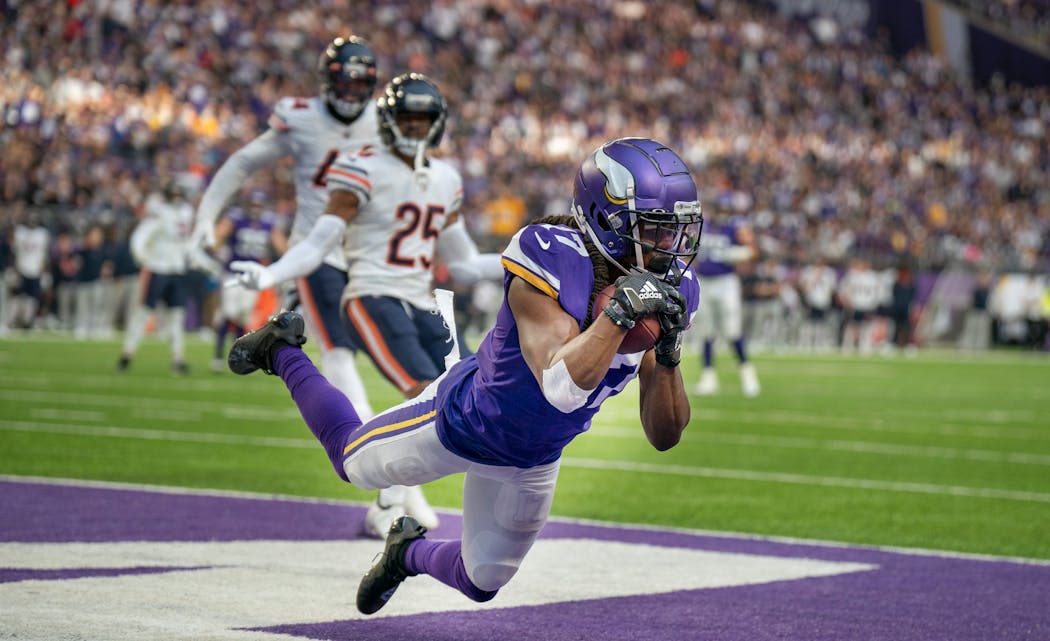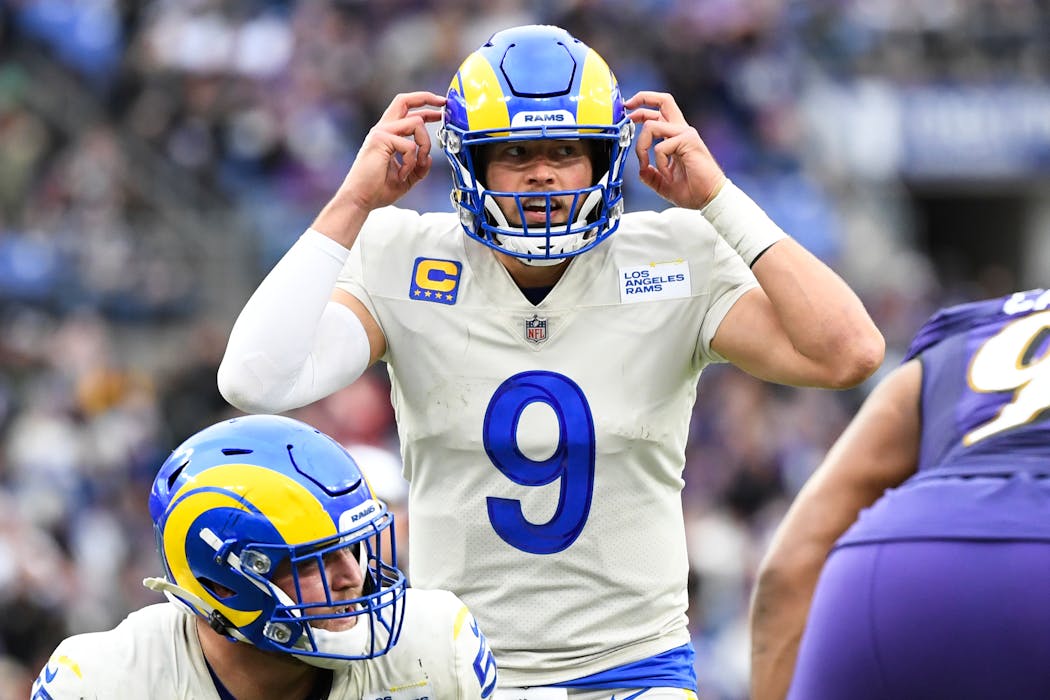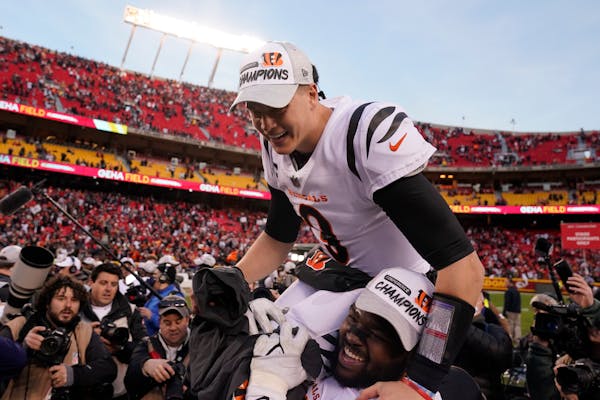Vikings fans can watch Super Bowl LVI on Sunday evening from a unique angle, examining the impact of the man they're hoping will help them end a 45-year drought since their last appearance in the NFL's championship game.
Kevin O'Connell's final act as Rams offensive coordinator, before becoming the Vikings' head coach next week, will be to try to help his team win a title in its home stadium. O'Connell is the latest member of Rams coach Sean McVay's staff to get his own head coaching job, following Matt LaFleur (Packers), Zac Taylor (Bengals) and Brandon Staley (Chargers).
The offenses the Rams and Bengals will run in Sunday's game have similar roots as the Vikings offense under Mike Zimmer's final three coordinators. Its application, however, is markedly different for both conference champions than it was for the Vikings in 2021. The Super Bowl, then, could be a preview of how the Vikings' offense will shift as O'Connell replaces Zimmer as the team's chief architect.
Both the Rams and the Bengals line up with three receivers on the field more than almost any team in the league, and throw more frequently than the Vikings. The Rams, like the 49ers under McVay's former boss Kyle Shanahan, employ plenty of pre-snap motion, while the Bengals have turned former No. 1 overall pick Joe Burrow loose on their way to their first Super Bowl since 1988.
The matchup at SoFi Stadium, between teams that handed the Vikings two of their eight one-score losses in 2021, will be a showcase for an offensive lineage that dates back to Bill Walsh and Mike Holmgren, surged forward with Mike Shanahan and Gary Kubiak and found much of its current expression in the younger Shanahan, McVay and their disciples.
Before O'Connell flies east to take command of the Vikings' offense, Super Bowl LVI could be a preview of what he's bringing to Minnesota.
Relying on three-receiver sets
In 2021, second-year receiver K.J. Osborn emerged as one of Kirk Cousins' trusted targets, catching 50 passes for 655 yards and seven touchdowns a year after he wasn't thrown a single pass as a rookie.
If the Rams' and Bengals' offenses are indicative of where the Vikings are going, Osborn might be the biggest beneficiary of anyone on their roster.
According to Sharp Football Stats, the Rams ran a league-high 85% of their plays out of "11" personnel (one running back, one tight end and three receivers). The Bengals used the personnel grouping on 77% of their plays, the second-highest rate in the league.
The approach stands in stark contrast to how the Vikings have played in recent years, preferring heavier personnel groups with two tight ends or a fullback either to run the ball or take advantage of favorable throwing lanes against opponents that stay in a base defense.
Osborn's emergence in the wake of tight end Irv Smith's season-ending knee injury had the Vikings in three-receiver sets more often this season than in 2020, when they ranked at the bottom of the league. But while 11 personnel has effectively become the league's base offensive package, the Vikings were still in it only 47% of the time, the fifth-lowest rate in the league in 2021.
What's more, 11 personnel functioned as something of a tell: the Vikings passed 73% of the time from that package; only three teams threw more (Chargers, Ravens and Dolphins). The Rams, by contrast, had a 63-37 pass-run split out of 11 personnel, trying to create an advantage by running against defenses with smaller players on the field.
That approach was especially effective for Los Angeles given the run-blocking prowess of All-Pro receiver Cooper Kupp, who could take on linebackers from a tight split at the line of scrimmage. The Vikings have emphasized blocking with receivers like Justin Jefferson, Adam Thielen, Osborn and Dan Chisena, but a new approach could emphasize those skills even more, while turning Jefferson loose for the kinds of favorable slot matchups that Kupp saw this season.
'Changing the math' with pre-snap motion
A new offensive approach still must adapt to the current roster. Taylor, who worked under McVay in 2017-2018, has overseen an evolving Bengals offense that isn't an exact Rams copy. They leaned on the shotgun and Burrow's LSU experiences in 2020 before pivoting this season to running back Joe Mixon and an under-center attack akin to L.A. and Minnesota.
But the Bengals' approach doesn't lean much on a couple of traditional Rams staples: motion and play-action passing. Only three quarterbacks — Tom Brady, Derek Carr and Ben Roethlisberger — faked a handoff less often than Burrow. McVay's scheme changed with quarterback Matthew Stafford, who has talked about his input in the game plans as the Rams have used more empty backfields and less play-action than with previous starter Jared Goff.
The Rams still often move players before and during the snap; only the 49ers called more runs with motion than L.A. last season. But Cincinnati ranked around league average in both motion on runs and passes, according to ESPN.
The designs helped spring Rams running back Sony Michel for 131 rushing yards and a touchdown in the Vikings' 30-23 loss in December.
"They put our guys in certain positions that they're not necessarily comfortable playing," Vikings linebacker Anthony Barr said after the loss. "We'd have the nickel [cornerback] in the run fit a lot of times, and then sometimes we just missed the gap."
Only O'Connell and his future staff know how exactly they'll change the Vikings offense, but one safe bet might be with more misdirection. Minnesota ranked below league average in both runs and passes with motion at the snap last season. Finding new ways to move players around before the play has been a weekly goal for O'Connell's current boss.
"Try to create numbers, change the math, give yourself better angles from an offensive perspective," McVay told ESPN in November. "It's kind of been an evolving and ongoing thing, but there's always an intent behind it. It's not just to look cool."
Trusting the quarterback
McVay and Taylor do share a strong belief in their quarterbacks. Trust is relayed through play calls. Stafford and Burrow ranked third and sixth on passes thrown beyond 20 yards downfield. The Rams ranked fifth in calling passes in neutral situations (early downs, 20-80% win probability for both teams), according to nflfastR, a site that catalogues and analyzes historical NFL play-by-play data. The Bengals ranked 13th and the Vikings ranked 18th last season.
Cincinnati's passing rate should be a tick higher, according to Taylor, who second-guessed his decision to run on second down in overtime against the 49ers before settling for a field goal in the Bengals' Dec. 12 loss. San Francisco scored a touchdown on the next drive.
"Two things can be true," Taylor told reporters a day after the loss. "You can believe in your run game, believe in your running back and your offensive line. You can also put the ball in your quarterback's hands, because in 15 years we think this guy's — we're going to look back and he's going to be a Hall of Fame-type quarterback, and give him a chance to win us the game."
Stafford, who ranked second with 41 touchdown passes but tied a league worst with 17 interceptions, has tested McVay's faith. He committed three turnovers in back-to-back wins late in the season. The first came Dec. 26 at U.S. Bank Stadium, where Stafford threw three picks but completed two third-down throws in a late field goal drive for a two-score lead. The second was the following week in Baltimore, where Stafford threw another two picks and fumbled.
But McVay called four straight passes to start a game-winning drive that ended with Stafford's 7-yard touchdown to receiver Odell Beckham Jr.
"I'm thinking about all the great plays this guy has made in crunch-time situations," McVay said when asked about Stafford's turnovers in the win at Baltimore. "There were a couple plays we want back that have big-time repercussions, but Matthew Stafford doesn't flinch, he doesn't blink."

Reusse: Once-formidable Twins starting rotation vulnerable without López

Twins lose second in a row to Blue Jays as bullpen falters late
What is the 'House settlement,' and what does it mean for the Gophers and NCAA?





